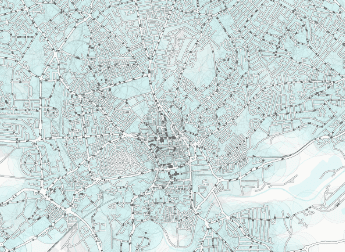
blog: How to make DRT a success
Friday 13th December 2019
Demand responsive transport (DRT) is talked about a lot these days. Its flexibility is seen as being an obvious solution for meeting diverse needs where limited demand makes conventional bus operation impractical. Developments in technology, coupled with the smartphone revolution, make opportunities for transport to be ‘on-demand’, rather than pre-booked. However, experience shows that it’s not necessarily an easy solution or one that is universally applicable. Care is needed in planning and implementing DRT services.

How was DRT Established?
DRT has been around a long time, with some services introduced in the 1970s. During the 1980s, such services were developed to meet specific niche markets, such as dial-a-ride for older and disabled people who were unable to use conventional buses. Some local authorities introduced taxibus services, replacing bus services that had high subsidy per users. At that time, I introduced the HomeHoppa service, an evening taxibus that replaced fixed route bus services across rural north Bedfordshire, only running where there were passengers and to places where people requested. It was a great result – passengers were delighted by the greater availability of service and quicker, more direct journeys. Overall, patronage doubled and subsidy per user reduced significantly.
Initiatives such as Rural and Urban Bus Challenge in the late 1990s and early 2000s saw the introduction of various DRT services, making use of new technology to track vehicles, take bookings and schedule journeys. Many of these were poorly thought out and passengers resisted the idea of using services that had to be pre-booked, preferring fixed route, albeit infrequent, conventional bus services. Some did prove successful, such as Lincolnshire Call Connect, and have gone on to expand and provide extensive public transport coverage in rural areas.
In recent years, other DRT services have been established, in many cases to replace fixed route bus services or to offer ‘lifeline’ services following the withdrawal of other services. In Essex, DaRT services cover various rural areas. In Leicestershire and Hampshire, ‘Taxishare’ services have been introduced in different settings, both rural and to cover gaps in smaller towns. Furthermore, the Department for Transport’s (DfT) Total Transport initiative (2015-2017) provided the funding for some authorities to introduce DRT services that looked at meeting different types of needs through one service, such as the East Cambridgeshire Link.
Commercial interest has been shown in on-demand transport, using new software systems and app-based booking. Services such as Arriva Click and Oxford PickMeUp are examples.
What Makes DRT Successful?
There is now a broad spectrum of different responsive services, using a variety of technologies (or none), range of vehicle types, and meeting the needs of different groups of users. This demonstrates that we can’t just say “DRT is the answer”. We need to understand what types of services work in which scenarios. By looking to the many different examples that exist, we can plan further successful DRT services in the future.
There are 4 key points for achieving such success:
- Planning
- Choosing the right model
- Visibility
- Monitoring
Careful planning and design are vital. It is important to understand the market, potential audience and their needs, tailoring the service to local circumstances. In many settings, particularly more rural, there needs to be an acceptance that subsidy will be required. The challenge is planning the service in a way to minimise the subsidy required by keeping costs down and maximising usage. ‘Many people to few destinations’ will probably help in such situations, avoiding anything too flexible, which would mean being like a taxi service. Focussing on particular destinations will provide the opportunities to combine journeys.
Various different models of provision may be available, so it is important to identify the one most appropriate for the particular local circumstances. Services might be operated by commercial, voluntary, or public sector providers, using minibuses or cars. Services may be formally organised or more informally provided, such as through local lift-giving. Local circumstances or opportunities may make one more appropriate, perhaps by enabling economies of scale to be gained or because a particular provider has a stronger presence. In some circumstances, it is right to recognise that a mix of different types of provision might be the answer, perhaps as different times of day or in certain locations.
Ensuring the service is visible and relevant will help promote it and generate usage. A strong identity and image are important. Opportunities to offer new destinations and meet suppressed demand should be considered. If the service is right and offers more than a conventional service, it will be valued and people will be happy to pay a premium to use it.

The very fact that DRT services are flexible means that constant monitoring and review are needed to ensure that they operate in an optimum way and respond to changing requirements and emerging opportunities.
This intelligence will feed back into revised planning of the service and fine tuning.
With careful thought and planning, DRT will play an important role in our future public transport networks. It will be for all involved in designing and operating such services to spend the necessary time and energy in developing services, looking to ensure that such services are themselves right, but also integrating seamlessly with wider provision of conventional buses and specialist types of transport that cater for education, social care, and health sectors.
To find out more about the range of public transport projects that ITP is involved with, browse our website.
